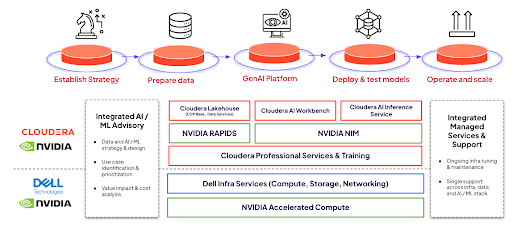NVIDIA, along with Japanese telecom provider NTT DOCOMO, recently announced a pioneering GPU-accelerated commercial Open RAN 5G built on NVIDIA, Fujitsu, and Wind River technology. This marks the world’s first deployment of a GPU-accelerated commercial 5G network by a telecom provider.
News: GPU-Accelerated vRAN
NVIDIA collaborated with Fujitsu and Wind River to facilitate the NTT DOCOMO’s launch of the world’s first GPU-accelerated commercial 5G network. This is a significant milestone in the telecommunications sector’s pursuit of improved performance, total cost of ownership (TCO), and energy efficiency enhancements.
The 5G Open RAN solution uses a high-performance 5G virtual radio access network (vRAN) from Fujitsu, built and accelerated on NVIDIA’s Aerial vRAN stack and NVIDIA BlueField Converged Accelerators.
NVIDIA’s Aerial platform encompasses a spectrum of wireless frameworks, AI frameworks, and accelerated computing infrastructure. Using NVIDIA’s Aerial allows telcos to create a high-performance software- and cloud-defined network that dynamically allocates resources using industry-standard equipment.

NTT DOCOMO tells us that the resulting solution delivers exceptional benefits in terms of TCO, network utilization, and power consumption, outperforming DOCOMO’s standard proprietary solution and reducing TCO by up to 30%, network design utilization by up to 50%, and power consumption at base stations by up to 50%. As of July 2023, DOCOMO serves over 22 million 5G subscribers and plans to expand the capacity and coverage of its 5G network through vRAN.
The NTT DOCOMO solution features carrier-grade support, promising a carrier-grade, hardened, and mature 5G solution with 10 years of long-life support and maintenance for telecommunications operators.
Analysis
Efficient deployment of vRAN technologies requires a certain degree of hardware acceleration. Intel addresses this with a Xeon variant containing AVX for vRAN extensions, while AMD plays here with a specialized Xilinx FPGA-based accelerator card. NVIDIA leapfrogs both approaches with its one-two punch of its GPU and targeted Aerial software stack.
The solution deployed by NTT DOCOMO demonstrates the potential of GPU-based acceleration for cellular RANs. This is just the beginning. NVIDIA continues collaborating with DOCOMO and other partners to enable the deployment of high-performance, energy-efficient, software-defined 5G vRAN worldwide.
NVIDIA and its partners delivered a significant achievement in the telecommunications industry, addressing the substantial challenges of enhancing performance, reducing the total cost of ownership, and improving energy efficiency. The solution realizes the potential of Open RAN by providing flexibility, scalability, and supply chain diversity while demonstrating a perfect application of NVIDIA’s technology.





